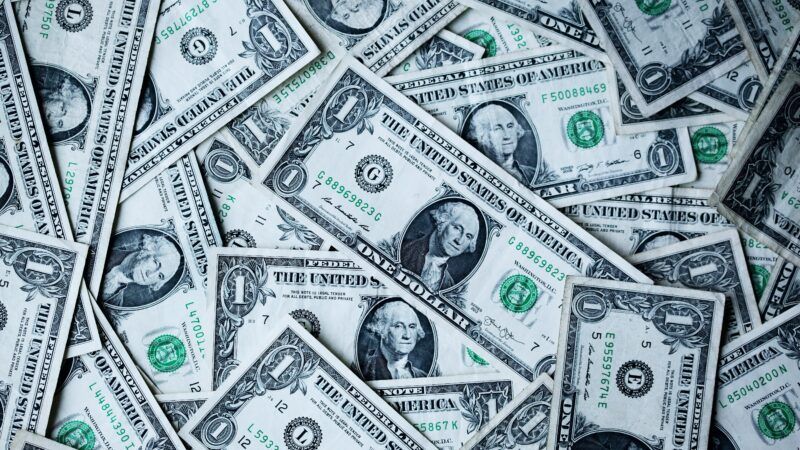The U.S. Economy Got Great News Today
We don't need Biden's 21st century 'New Deal' to rebound.

The U.S. economy added 916,000 jobs in March, the Labor Department said Friday, far exceeding the Dow Jones estimate forecasting that payrolls would increase by 675,000. Unemployment fell to 6 percent.
It's the fastest growth the country has seen since August 2020 and a sign that the U.S. is bouncing back after a year of COVID-19 restrictions that hamstrung the economy. Hospitality and construction added the most positions, coming in at 280,000 and 110,000 respectively. Notably, the uptick materialized without manipulation, casting doubt on the idea that we need President Joe Biden's American Jobs Plan to chart a return to productivity.
The proposal would pour $2 trillion into U.S. infrastructure. True to the plan's name, it's not really about that. It's about creating jobs—specifically union jobs, the likes of which directly contribute to the dizzyingly-high price of American infrastructure.
"Prevailing wage laws that require federal infrastructure projects to pay union rates to workers are a known contributor to America's outrageously high infrastructure costs," writes Reason's Christian Britschgi. "So are Buy America provisions that generally mandate federally-funded infrastructure projects procure (often more expensive) domestic parts and materials."
The result: "Biden's $2 trillion spending plan will buy a lot less infrastructure than it otherwise could."
About $621 billion would go toward transportation, including revamping bridges and expanding Amtrak. Another $650 billion would address "quality of life," which Biden would spend on constructing or giving makeovers to affordable housing, public schools, and various commercial buildings. He endeavors to replace every lead pipe and water service line for $11 billion, notes USA Today.
An additional $400 billion would go toward caregivers for the elderly and those with disabilities, and another $300 billion is set aside for manufacturing projects. He would devote $180 billion to research and development, focusing on fleshing out clean energy solutions.
It's certainly true that U.S. workers experienced quite the shock this past year in the face of government-imposed lockdown orders and individual caution over the COVID-19 pandemic, upending livelihoods across a slew of sectors. Luckily, the country already has a solution: the vaccine, which is the key to rebounding both to normal life and a normal economy. Though Biden has reportedly sought to style himself after former President Franklin Delano Roosevelt, the U.S. does not actually need a 21st century New Deal.
Despite fearmongering to the contrary, the lifesaving vaccines are already helping to curb hospitalizations and deaths related to COVID-19. The national percent positive test rate for the virus currently sits at 4.7 percent, down from January's 13.9 percent. California, which was slammed as the coronavirus hotbed through fall and winter, boasts a percent positive test rate of 1.5 percent, the lowest in the country.
And though case counts are seeing a slight bump in certain parts of the U.S., raw cases were never an appropriate metric to evaluate the severity of the virus in the first place. The elderly are far more likely to suffer should they contract COVID-19, and they have been prioritized nationwide for inoculation.
In other words, once the vaccine becomes even more widely available—as it is expected to be come May 1—cases, hospitalization, and deaths will continue to trend downward as the arc of the U.S. economy naturally follows the opposite direction. According to Axios, one estimate predicts the economy will grow by a full 8 percent in 2021—"the largest economic expansion for the U.S. in generations."
"Business activity has returned to close to normal levels in much of the country despite the restrictions, with a tracker by Jefferies indicating that activity is at 93.5% of its pre-pandemic level," reports CNBC. "Data from Homebase shows that employees working and hours worked both gained sharply over the past month, with significant improvements in both hospitality and entertainment. Those have been the hardest-hit sectors, but have improved over the past two months as governments have loosened up on some of the harshest restrictions on activity."
And what about manufacturing, which Biden has specifically put a multibillion spotlight on in his plan? The sector "is enjoying a boom," adds the network, "with an Institute for Supply Management gauge of activity in the sector hitting its highest level since late 1983 in March."
Show Comments (67)